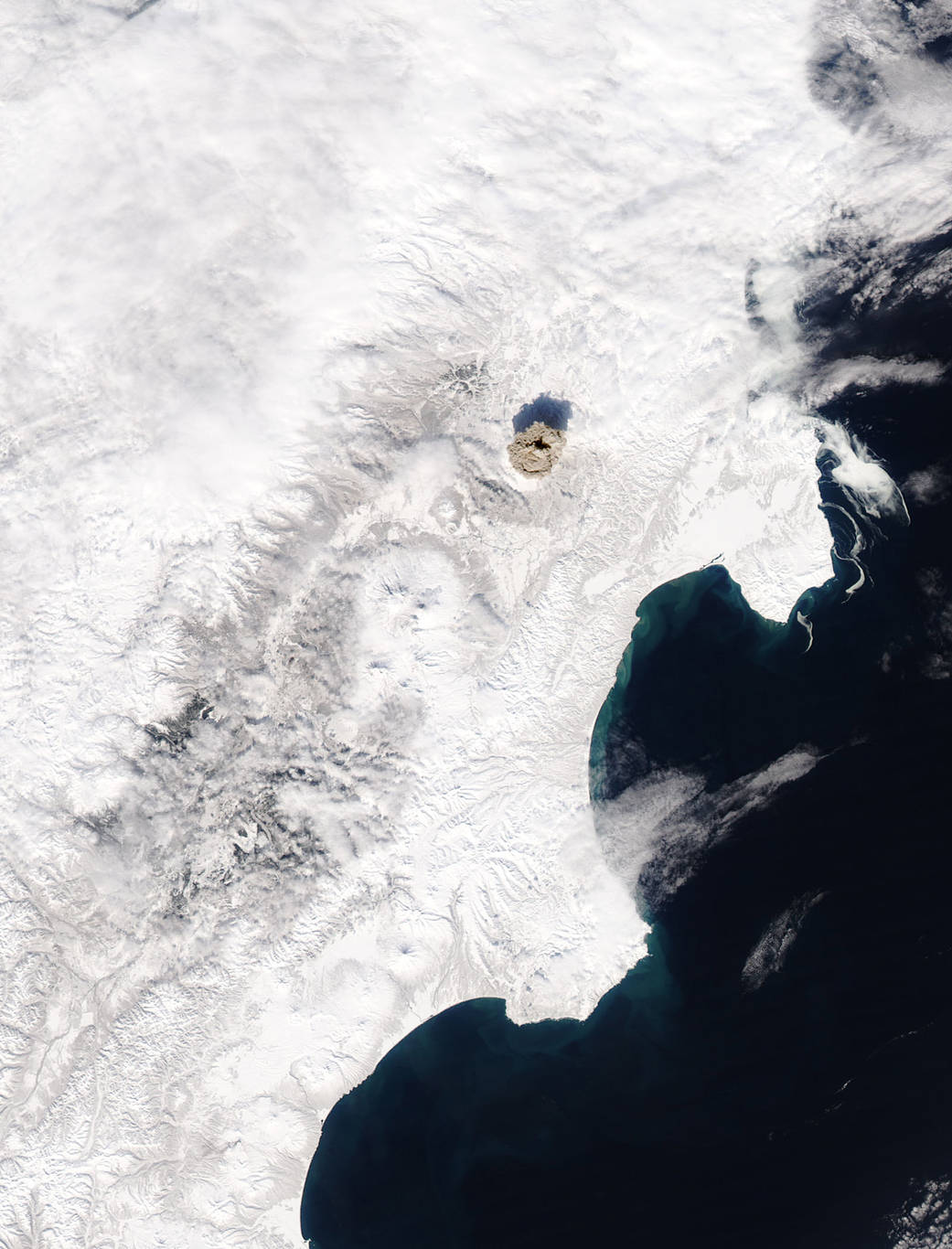On March 29, 2007, the Shiveluch Volcano on the Russian Federation’s Kamchatka Peninsula erupted, sending an ash cloud skyward roughly 9,750 meters (32,000 feet).
Satellites often capture images of volcanic ash plumes, but usually as the plumes are blowing away. This image, however, is different. It shows the gray-brown ash cloud suspended directly over the summit. At the time the Aqua satellite passed overhead, the local air was still enough to let the ash cloud hover. In this image, the bulbous cloud casts its shadow northward over the icy landscape.
Volcanic ash eruptions inject particles into Earth’s atmosphere; substantial eruptions of light-reflecting particles can reduce temperatures and even affect atmospheric circulation. Large eruptions may impact climate patterns for years. A massive eruption of the Tambora Volcano in Indonesia in 1815, for instance, earned 1816 the nickname “the year without a summer.”
Shiveluch is a stratovolcano – steep-sloped volcano composed of alternating layers of solidified ash, hardened lava and volcanic rocks. One of Kamchatka’s largest volcanoes, it sports a summit reaching 3,283 meters (10,771 feet). Shiveluch is also one of the peninsula’s most active volcanoes, with an estimated 60 substantial eruptions in the past 10,000 years.Image credit: NASA/GSFC/MODIS Rapid Response Team
1 min read



























